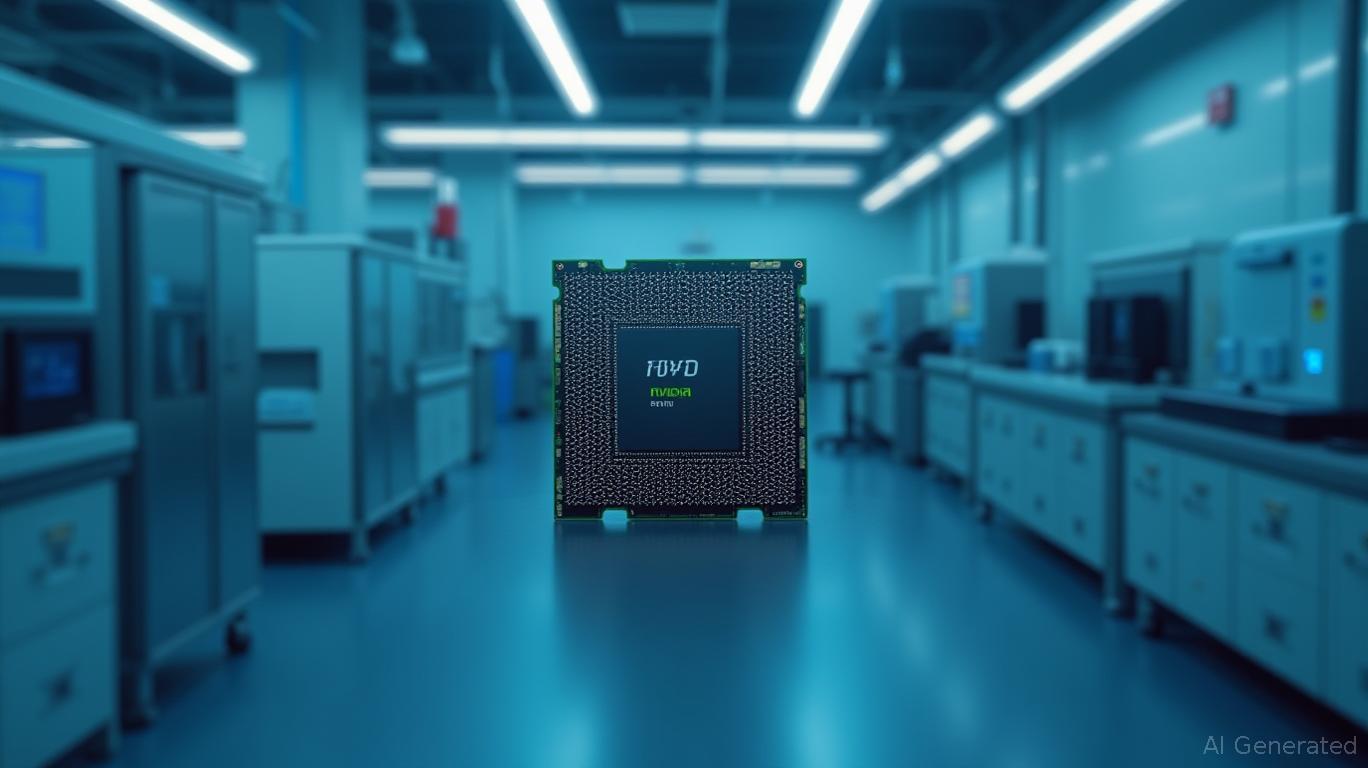NVIDIA's Tech Rally Defies Tariff Headwinds: A Case for Strategic Tech Buys
In the volatile landscape of global trade tensions and geopolitical headwinds,
(NVDA) has emerged as a beacon of resilience, its recent earnings report underscoring the enduring power of technological innovation. Despite U.S.-imposed tariffs on its advanced AI chips to China, the company's Q2 2025 revenue surged to a record $30.0 billion, fueled by a tenfold increase in AI inference token generation and strategic expansions into markets like Saudi Arabia and Japan. This article explores how NVIDIA's short-term challenges are overshadowed by its long-term dominance in AI infrastructure, making tech sectors a compelling buy for investors willing to navigate near-term turbulence.The Earnings Surge: A Triumph of AI's Ascendancy
NVIDIA's Q2 results were unequivocally strong, with data center revenue alone reaching $26.3 billion—a 154% year-over-year jump. The company's Hopper and Blackwell architectures are now powering AI supercomputers for hyperscalers like Microsoft and Meta, while partnerships with cloud providers (AWS, Azure, Google Cloud) and sovereign nations (Denmark, Japan) are accelerating adoption of its AI platforms.

Even as tariffs on its H20 chips to China forced a $4.5 billion writedown and $8 billion in lost Q2 revenue, NVIDIA's leadership remains unshaken. CFO Colette Kress emphasized that global AI demand remains “incredibly strong,” with the company guiding for $32.5 billion in Q3 revenue—a 7% sequential increase. This underscores a critical truth: AI is no longer a niche sector but a foundational technology reshaping industries from healthcare to finance.
Tariff Uncertainties: A Speedbump, Not a Roadblock
The looming July 9 deadline for resolving U.S.-China trade restrictions poses a near-term risk, as further bans could delay NVIDIA's access to China's $50 billion AI chip market. Yet, the company's agility is evident: it has pivoted to markets like the Middle East, where it is supplying Saudi Arabia's AI startup Humain with thousands of GPUs, and is ramping up U.S. manufacturing in Arizona and Texas.
While gross margins dipped to 60% in Q3 due to Blackwell production costs and inventory charges, management remains confident in its mid-70% annual target. The recent court ruling blocking parts of Trump-era tariffs adds uncertainty, but it also opens room for negotiated resolutions. Investors should view this volatility as a buying opportunity: NVIDIA's AI ecosystem is too deeply embedded in global tech infrastructure to be derailed by temporary trade disputes.
Sector Rotation: Tech's Time to Shine
As markets oscillate between fear and greed over trade policies, NVIDIA exemplifies why tech remains a strategic sector for rotation. The AI boom is not a fad but a generational shift, with enterprises and governments racing to deploy AI-driven solutions. NVIDIA's DGX Cloud platform and partnerships with cloud giants ensure its technologies will underpin this transition.
Moreover, the company's valuation—despite recent stock dips—remains justified by its growth trajectory. With a 122% year-over-year revenue surge in Q2 and a full-year FY2025 revenue target of $130.5 billion, NVIDIA is outpacing broader market declines.
The Bottom Line: Buy the Dip, Trust the Tech
The tariff timeline is a critical inflection point, but investors should focus on NVIDIA's long-term moat: its unmatched AI chip architecture, partnerships, and the insatiable demand for its tools in sectors from healthcare to autonomous vehicles. While short-term volatility may persist, the company's Q3 results ($35.1 billion in revenue, 17% sequential growth) reaffirm its ability to navigate headwinds.
For investors, the message is clear: now is the time to deploy capital into tech resilience. NVIDIA's earnings-driven rally and AI leadership make it a cornerstone of any forward-looking portfolio. The trade wars may rattle markets, but the future belongs to those who bet on innovation—and NVIDIA is writing that future.
Act now: The AI revolution is here, and NVIDIA is its engine.

Comments
No comments yet